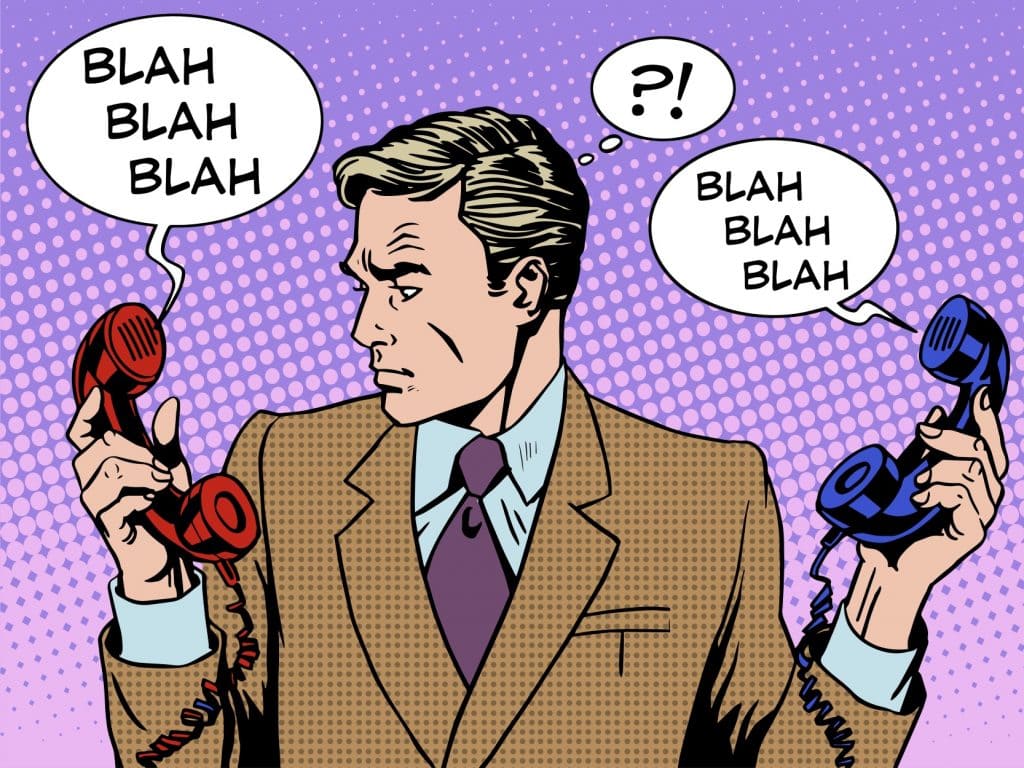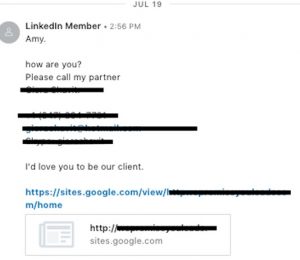
How I used cold calling to start an 8-figure deal with a unicorn.
If there is any platitude that accomplished salespeople laugh at most, it’s definitely “cold calling is dead.”
Case in point – I used it to start the conversation with one of the biggest unicorns in history just 4 years ago (pre-ATP). They ended up spending $2,000,000 a month with me – something completely unheard of in the HR Tech industry.
Truth be told, it wasn’t overnight. There’s a lot of work you have to do after the call to close a deal of that magnitude (6+ months in my case).
But my point is, while it’s popular for people to spout platitudes on LinkedIn from time to time about cold calling being an ancient weapon from a hokey religion, I (and many other salespeople killing it in the background) can confidently tell you nothing is further from the truth.
The problem I see is that very few people know how to use it effectively. So here’s the exact process I used to start the conversation on that 8-figure deal with a unicorn using cold calling – complete with scripts, tools, and more.
First, a definition to make sure we’re on the same page.
What cold calling is (and is not).
Here’s how most salespeople approach cold calling:
- Find a company you think could use your product/service/solution
- Get a contact number
- Call and pitch
- Hope for the best
Actually, this happens with cold emailing and even InMail too:

However, this is the antithesis of what effective salespeople do.
See, all the word “cold calling” (or cold emailing for that matter) really means is that it’s first contact with someone new. It could be a new employee at a not-so-new company who hasn’t talked to you before or a new company altogether. Either way, the contact has never been made.
But unfortunately, a lot of salespeople seem to think that means they can be “cold” too.
Ugh, no! The best cold callers (and cold emailers) know 80% of their success comes from the homework they do to warm themselves up ahead of time before they ever reach out. Things that inform them and help them ask intelligent questions, so they can have a meaningful conversation.
Here’s how I did that on this particular deal.
Step #1: I found a meaningful nugget to connect over.
The problem with the approaches I illustrated above, is that they start with the needs of the person calling, not the person receiving the call. To get around that, you need to find something that connects the dots between where they are and how you can help.
This is always situational (more on this in a second). And in this case, we had actually attempted a few campaigns with this particular prospect already. But we hadn’t had a lot of success since they were missing a solid point person to manage it (which I acknowledged and then suggested we go on ‘ice’ until a later date).
Fast forward a few months and they made a key executive hire to support said initiative which was the signal that it was time to engage. But before I reached out to their shiny new hire, I wanted to make absolutely sure that the call would genuinely be helpful for him.
Otherwise, it would be too easy to get lost in the sea of calls he’s already getting.
In this case, the client needed to scale FAST, and since our model hadn’t worked for them previously I knew we needed to get creative, retool, and rethink our approach.
I actually knew the other channels they were currently working with (I worked for 2 of them in a previous life) so I looked into what we had learned in our previous attempts and what other companies we were successfully working with were doing to find that nugget of insight that would put us ahead.
Long story short, it worked and I’ll illustrate how I used it to break through in the next section. But the key takeaway here is that you need to start your cold calling prep by finding a relevant, business-critical insight that allows you to start a meaningful conversation with them quickly.
Something that catches their attention but is also emotionally compelling, intellectually interesting, and value-added to them, not you.
You can do this in any number of ways and you don’t need endless hours or a prior engagement. Here are some of my favorites:
- Read their content online and find the gap – Nudge.ai is great for this
- Get notified about who is coming and going personnel-wise – The Inno Lists, Pitchbook, Google Alerts, and so many other gems for this
- Read online reviews to understand their pain points – Capterra and G2Crowd are great for this
- Stay in the know regarding their competitors and marketplace – LinkedIn Sales Navigator, Crunchbase, and AngelList are some of my favorites
If you can find a relevant and compelling data point in any of these areas, you’ve got the foundation to start a conversation.
Remember, what you put into something is what you get out of it. So, if you take the time to do this upfront, you’ll be waaaay ahead of most salespeople, making you seem much more prepared, thoughtful, and genuine in the process.
Here’s how I used my nugget in the call.
Step #2: I kept the call focused on their needs – not the sale.
The biggest thing I see (and let’s be honest, experience) that tanks a lot of cold calls is salespeople focusing too much on themselves while on the phone.
This doesn’t work for three reasons:
- The other person usually doesn’t know who you are
- The other person usually doesn’t care who you are
- You’re usually not the first person who has called them
But, this is where your nugget (and your personality – more in a sec) breaks the ice and gives them a reason to care about who you are and what you have to say.
So rather than starting off with my pitch and why I could help them best, I led by acknowledging the tremendous pressure he was probably under. Then I quickly transitioned to his needs and the homework I’d done (my nugget).
Here’s how the conversation went down.
——
New Executive (NE): “Hello?”
Me: “Well hello there, it’s Amy Volas from ____… cheers on the new role, how is life in the fast lane?”
NE: “It’s good but I’m actually on the way to the airport heading to Italy for a quick vacation. What do you need?”
Me: “Consider me properly jealous! And if you need any last minute tips, let me know as I used to live there – happy to help! I’m knocking on your door because I can only imagine the pressure you’re under to deliver XXX and YYY based on your CEO’s feature in TechCrunch and the growth goals [PERSON ON YOUR TEAM] shared with me from our last engagement. Is that at the top of your priority list as well?
NE: It is, amongst a lot of other things (hence why I was hired)… why?
ME: We’ve cracked the same code for [YOUR BIGGEST COMPETITORS] and I’ve been chomping at the bit to talk to you about this. Knowing your mindset is all about vacation, shall we discuss when you’re back in the office??”
NE: “Interesting… (insert pause)… especially when our first go-round was a challenge, to say the least.”
Me: “This has been top of mind from our last go round and I’ve spent a lot of time peeling back the layers to understand what went wrong. But I waited to call only when I was 100% confident we had it… and here we are. We worked with the team internally to build something specifically designed for your business based on [XYZ KEY FACTORS] that were deal breakers for you before. Conservatively this can produce 15X what was done before which should get you 15% under cost goals. Want to dig into the details when you’re back?”
NE: “Sure, I’m open to hearing more when I get back. Shoot me an invite for 25 minutes, my email is [EMAIL].”
Me: “Consider it done, enjoy your time off, and I can’t wait to regroup when you’re back in action!”
—–
The key takeaway from this is that I started with a desire to share insights with him (to help), not talk about my product and solution.
And that’s the role your nugget should fill. It should connect the dots between their needs and your solution.
Also something to note… I approached this the way I was comfortable that matched my personality. This is critical as well, because authenticity and confidence (not ego or cockiness) is everything on cold calls and people can sniff out a lack of it in seconds.
No matter what you do, you have to be confident with it and make it your own. This includes tone of voice!
Here’s something else to keep in mind.
Step #3: I asked for something small, not big.
Notice how I didn’t ask my contact for the sale or push him to discuss right then and there. This is key!
Folks, keep in mind that small things are a lot easier to say yes to than big things. And for this call, I just wanted a chance to talk in greater detail about things that could help him achieve his goals.
That’s it.
To be honest, I don’t know many people who have a big task in front of them who would say no to something like that unless it was simply just the wrong time (which in this case it turned out to be, so I reduced the ask even further).
But the key was knowing that the time was right, he was in the spotlight with a lot of pressure, and that I had taken the time to figure out a way to help him in a meaningful way. He was intrigued because the nugget was compelling, which gave me the freedom to shift mid-conversation when he wasn’t really in the spot to talk.
But even if he did have time right then and there, I wouldn’t have asked for a sale or a big commitment either. I simply would have identified the appropriate next step together and moved to lock that in.
You could call it an “extension of the nugget” perhaps.
Either way, the point with this is to remain consultative and to ask for something small each time until you know they are ready to go bigger.

"Now my buyers see me as a valuable person to know."
– Zach Hatterick, Account Executive
